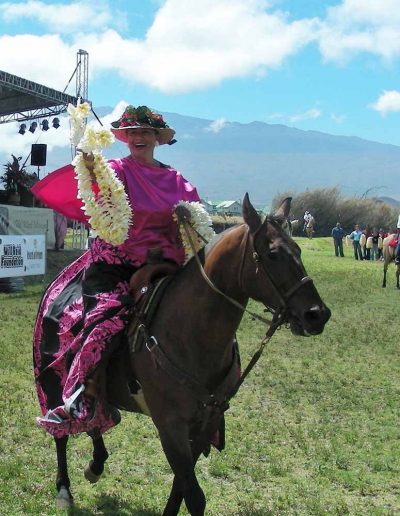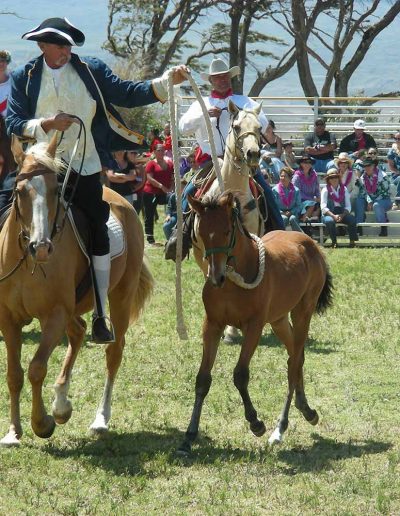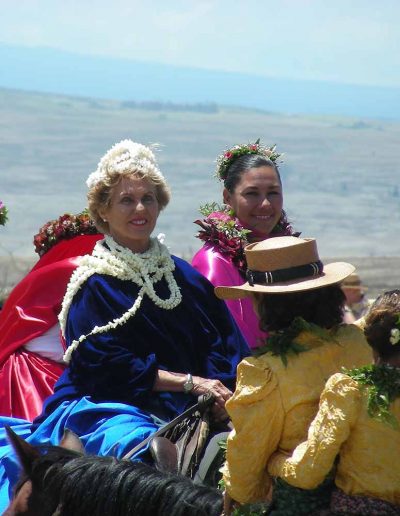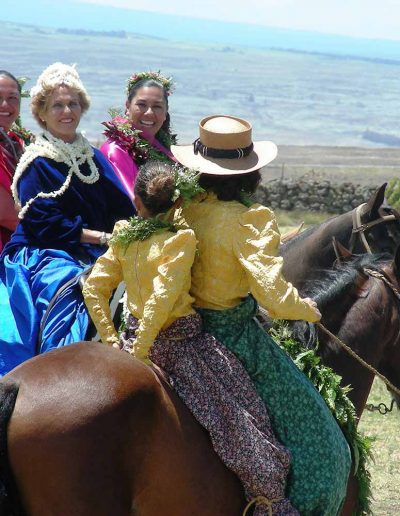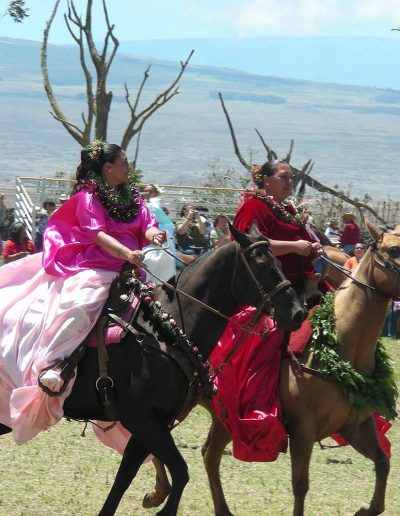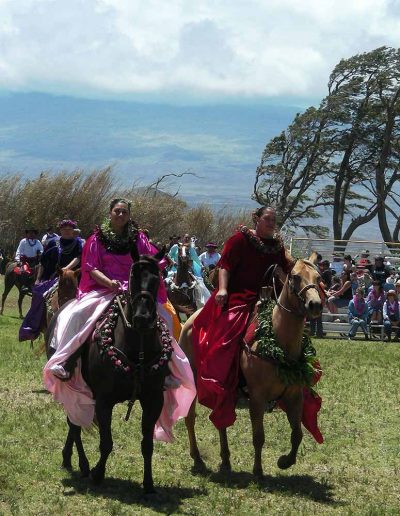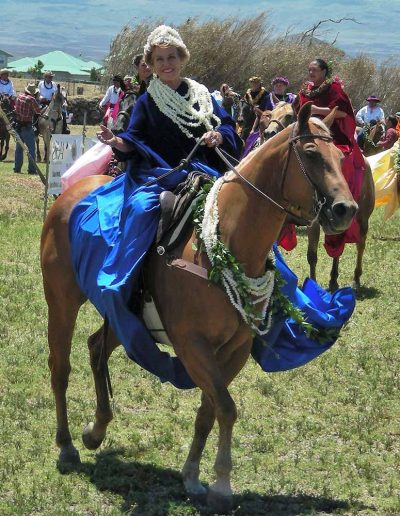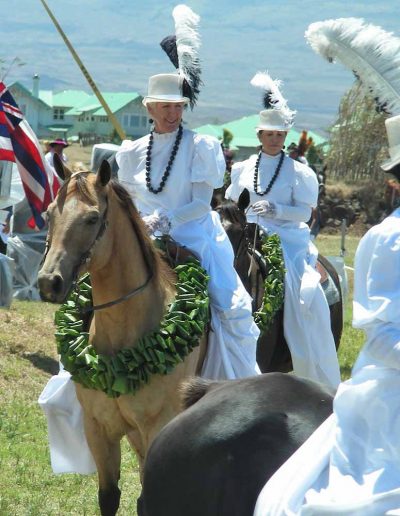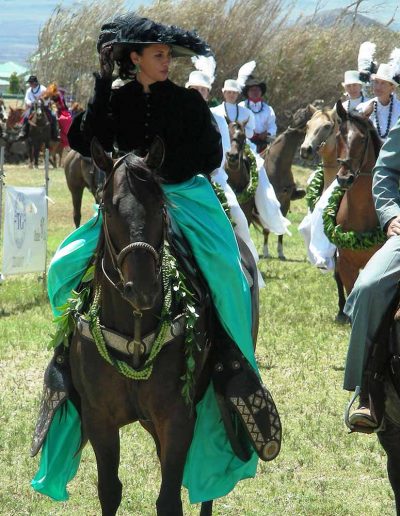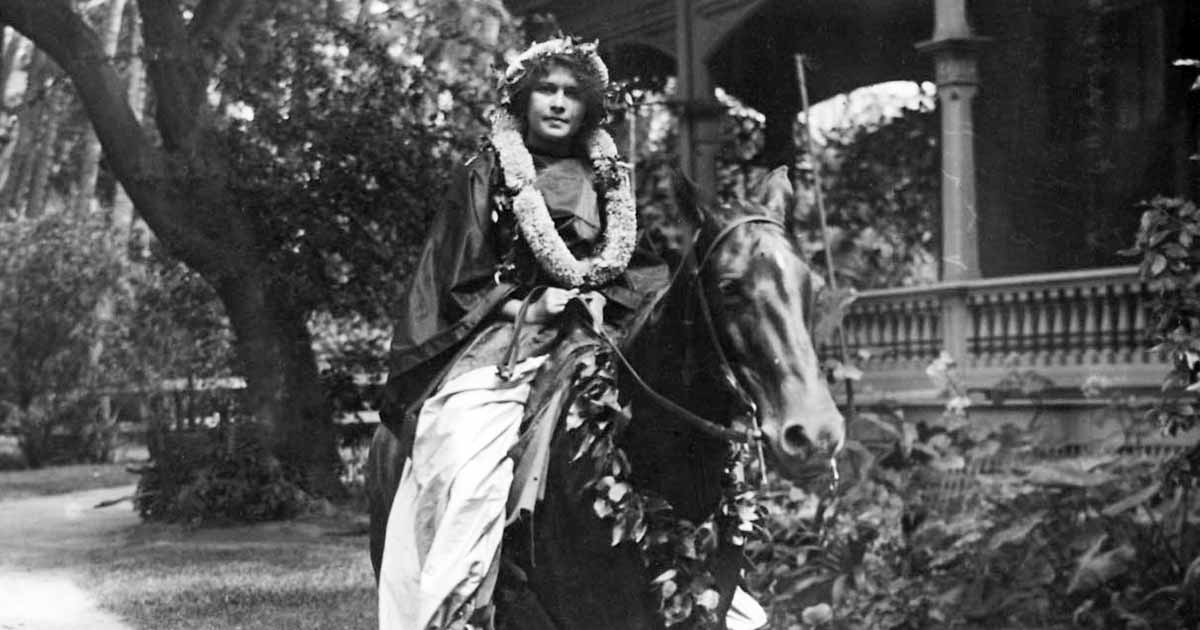
Adele Kauilani Robinson Lemke (courtesy Hawaii State Archives)
A beautiful tradition rides on!
Hawaiʻi’s people fell in love with the horse as soon as the first one arrived in 1803, quickly learning to ride astride, and enjoy the thrill flying across land, almost as fast as their seafaring friends in canoes. Women protected their clothes from inevitable dust by wearing long skirts draped over laps and legs, down to the stirrups.
In 1873, noted writer Isabella Bird observed, “The women seemed perfectly at home in their gay, brass- bossed, high peaked saddles, flying along astride, bare-footed, with their orange and scarlet riding dresses streaming on each side beyond their horses’ tails, a bright kaleidoscopic flash of bright eyes, white teeth, shining hair, garlands of flowers and many coloured dresses…”
In time, the look became ultimately fashionable, and organized units of Pāʻū Riders grandly appeared in parades, rodeos and other public exhibitions. Riders wore elaborate lei, and costumes made from yards and yards of brilliantly colored fabric. Horses too wore lei, from the bridle’s browband to a mantle of flowers across the saddle, and festive greenery around their fetlocks.
In modern traditions, such as Kamehameha Day and Merrie Monarch parades, eight different Pāʻū Riders represent the eight different islands, with the unique color, and specific flower of each. Hawai‘i Island’s Pāʻū Princess will wear flaming red, and she and her horse may wear elaborate lei of ohia lehua, a favorite of Pele. It takes time, and a village of helpers, to gather lei materials and make the lei for a Pāʻū Rider, not to mention, sewing costumes, dressing her, and all the details involved.
Parker Ranch employee and esteemed Pāʻū Rider Dee Dee Bertelmann says, in an interview with Vogue magazine, “Today, there’s a lot of pageantry. Some people will use fake flowers, some people will have an entire forest on their head or on their horse lei, but . . . sometimes that’s how our stories get lost,” Bertelmann says. “There’s a lot of us who perpetuate our traditions of simplicity and the reasons that you’re riding. We ride for our ancestors, we ride to keep our legacy, to keep our culture. What we teach our children is simplicity at its best,” Bertelmann continues. “A Pāʻū rider showcased her riding skills, not her pageantry skills. That’s what Pāʻū is about to me: a woman who loves to ride.”
In August, 2019, Dee Dee conducted a workshop for PPS on tying Pāʻū skirts, a prelude to the spectacular revival of a long-time Waimea equestrian event, Old Hawai‘i on Horseback.

